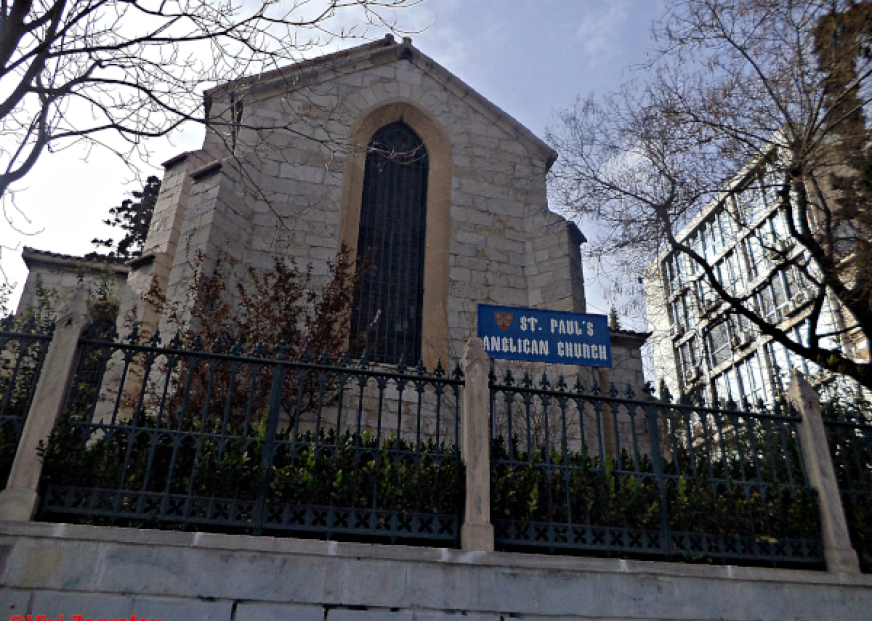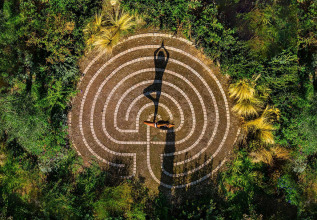4 MIN
TRAVEL TIPS
Christian medieval neo-gothic monuments in Athens

 The Duchess Mansion at Ilisia is a beautiful white residence owned by an eccentric French-American Duchess who lived in the capital from 1834 to 1864. It was designed by Stamatis Kleanthis, and is the first residence in Athens decorated with marble. Today it hosts the Byzantine Museum of Athens. On the second floor of the Mansion you can enjoy an excellent view on Mount Lycabettus, and on Mount Hymettus.
The Duchess moved in the Mansion after the death of her beloved daughter Eliza. In 1836, Eliza died of the plague in Lebanon and the Duchess mummified her body and brought it back to Athens. When she arrived home, she couldn’t part from her. She put her daughter inside a window case with two funeral candles lit next to it and each day, she sat there, talked to her and cried. This lasted almost ten years. Eventually in December 1847, a fire was put on and incinerated the dead body and the house.
The Duchess Mansion at Ilisia is a beautiful white residence owned by an eccentric French-American Duchess who lived in the capital from 1834 to 1864. It was designed by Stamatis Kleanthis, and is the first residence in Athens decorated with marble. Today it hosts the Byzantine Museum of Athens. On the second floor of the Mansion you can enjoy an excellent view on Mount Lycabettus, and on Mount Hymettus.
The Duchess moved in the Mansion after the death of her beloved daughter Eliza. In 1836, Eliza died of the plague in Lebanon and the Duchess mummified her body and brought it back to Athens. When she arrived home, she couldn’t part from her. She put her daughter inside a window case with two funeral candles lit next to it and each day, she sat there, talked to her and cried. This lasted almost ten years. Eventually in December 1847, a fire was put on and incinerated the dead body and the house.
 A Neo-Romanesque church devoted to Crusaders’ favorite hero Saint George exists in Metaxourgeio. The neo-Romanesque style is a revival of the Romanesque style, that existed from 1000 until 1200 AD. It is similar to the neo-Gothic style, notably because of their same preference to arches and towers.
Saint George was a Roman soldier of Greek origin and officer in the guard of the Roman Emperor Diocletian. He was sentenced to death for failing to recant his Christian faith. According to a medieval romance he lanced at a dreadful dragon and saved the daughter of a local king from being eaten by the dragon. In return he asked the King to convert to Christianity.
The church was designed by Ernst Ziller and was built in 1899-1901. At the outside of the church, turrets rise on the outer edges.
In the interior, the colors on the walls are smoky due to the lit candles that have been burning there for ages. There are old Byzantine icons, beautiful stained glasses and an old mosaic floor covered with red tiles. An imposing marble pulpit dates back to 1916. An icon of a Greek version of Saint George dressed in traditional Greek clothes and killed by the Ottomans is worth seeing.
The church was part of the Hatzikonstas orphanage that operated in the area from 1853 to 1963, but hasn’t survived today.
Vivi Zografou | Dark Attica
A Neo-Romanesque church devoted to Crusaders’ favorite hero Saint George exists in Metaxourgeio. The neo-Romanesque style is a revival of the Romanesque style, that existed from 1000 until 1200 AD. It is similar to the neo-Gothic style, notably because of their same preference to arches and towers.
Saint George was a Roman soldier of Greek origin and officer in the guard of the Roman Emperor Diocletian. He was sentenced to death for failing to recant his Christian faith. According to a medieval romance he lanced at a dreadful dragon and saved the daughter of a local king from being eaten by the dragon. In return he asked the King to convert to Christianity.
The church was designed by Ernst Ziller and was built in 1899-1901. At the outside of the church, turrets rise on the outer edges.
In the interior, the colors on the walls are smoky due to the lit candles that have been burning there for ages. There are old Byzantine icons, beautiful stained glasses and an old mosaic floor covered with red tiles. An imposing marble pulpit dates back to 1916. An icon of a Greek version of Saint George dressed in traditional Greek clothes and killed by the Ottomans is worth seeing.
The church was part of the Hatzikonstas orphanage that operated in the area from 1853 to 1963, but hasn’t survived today.
Vivi Zografou | Dark Attica


